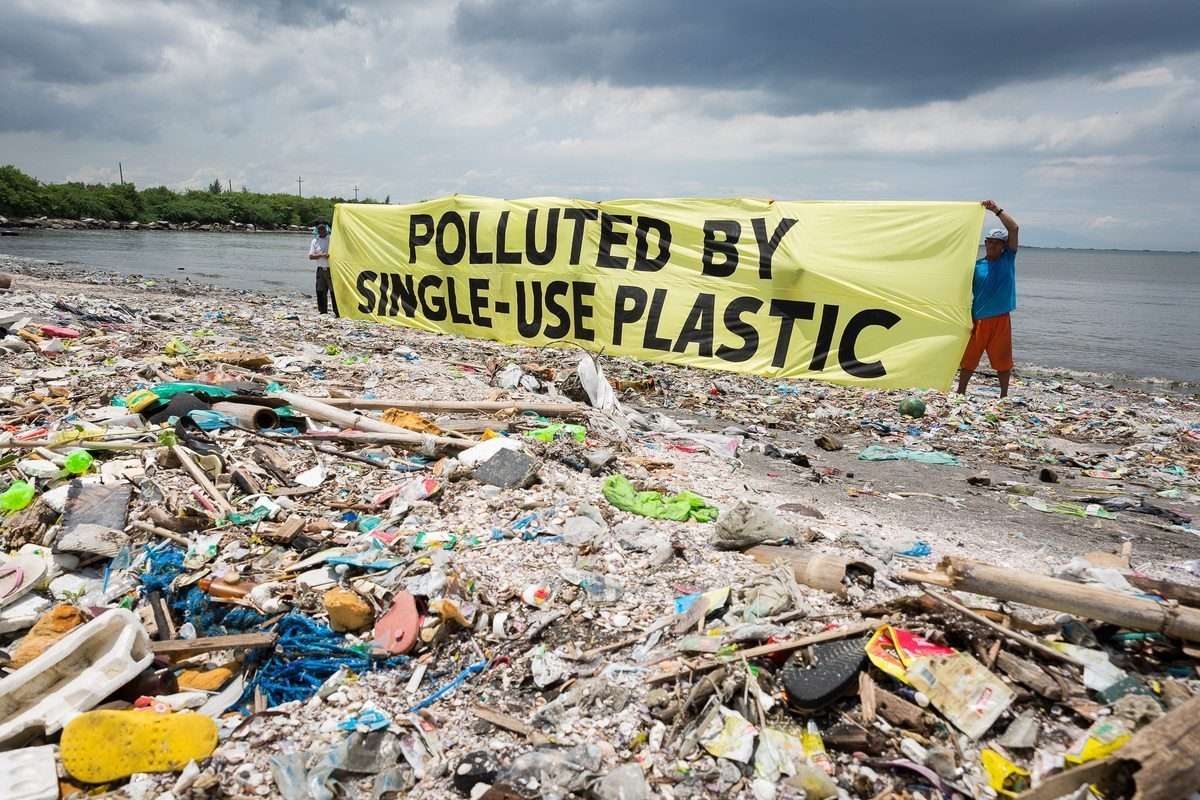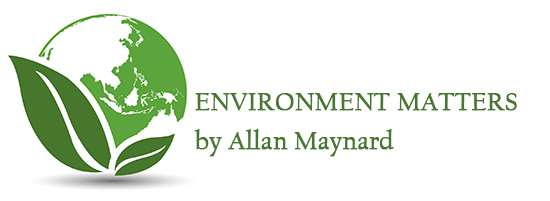By Allan Maynard, MSc. – October 26, 2020

From National Geographic 06/2018 – a market stall in Zhejiang, China
Everyday, we touch hundreds od items that are made of plastic. Plastics have greatly benefited humankind. They help keep planes in the air, make automobiles more fuel efficient, and allow the shipment of clean drinking water where needed. From computers and cell phones to televisions and microwaves, durable, lightweight and affordable plastics have helped revolutionize the electronics we rely on every day. Plastics also help to preserve the longevity of food and allow goods to be conveniently packaged for shipment to markets. Modern healthcare would not be possible without the use of plastic materials. From keeping damaged hearts beating to the smallest tubing, plastics have made health care simpler, more sterile and less painful.
Yes – plastics have greatly benefited humankind but the benefits and convenience have come at a great price. This is the great plastics conundrum. We have been relying upon but also overusing plastics for the past 5 decades and now we are drowning in the resulting waste. It is a serious problem that science failed to properly predict.
Most of us know about the Great Pacific Garbage Patch that is one of the five offshore plastic accumulation zones in the world’s oceans located halfway between Hawaii and California. It covers an area approximately 1.6 million square kilometers – an area twice the size of Texas. Shocking as this is, there is an even more dramatic example to demonstrate the extent of ocean’s plastics problem. Dr. Jenna Jambeck, a professor at the University of Georgia did the math and her conclusions were recently presented in a National Geographic article (06/2018). Imagine 5 plastic grocery bags stuffed with plastic waste sitting on every foot of coastline around the entire world. That would correspond to 8.8 million tons – of plastic waste entering the ocean – EACH YEAR. And this number is likely a lower estimate of how much plastic waste enters the ocean annually. Moreover it’s really only the tip of the iceberg when we also add in all the waste found on land and accumulating in landfills.
This article – and some upcoming articles will summarize what plastics really are, an overview of the environmental and health consequences, which plastics can and cannot be recycled (hint – most cannot be), the serious issue of micro (and even nano) plastics, along with solutions for a safer future.
WHAT ARE PLASTICS
Now for a very short chemistry lesson. Because of the great variety of ways that the carbon atom can bond with itself and other elements, there are more than nine million known organic compounds includinghydrocarbon fuels, proteins, fats, sugars, cellulose, pesticides, dyes and more. Plastics are among an incomprehensively large sub-list of organic compounds known as polymers. A polymer is a substance or material consisting of very large molecules, or macromolecules, composed of many repeating subunits.
Rubber (latex) is a naturally occurring plastic that has been used for millennia. Most science historians credit Alexander Parkes for introducing the first ever man-made plastic material in 1862. “Parkensine” as it was called was made by dissolving wood or cotton fibers (nitrocellulose) in solvents and then mixing in camphor or vegetable oils. It was marketed as an alternative to ivory and animal horns. The big breakthrough though, came later – in 1907, when Leo Baekeland invented “Bakelite” – made not from natural materials but from fossil fuels. His work opened the floodgates to a torrent of now familiar synthetic plastics – polystyrene in 1929, polyester in 1930, polyvinylchloride (PVC) and polythene in 1933, nylon in 1935. Starting around the 1950s, plastics were mass-produced. Now it’s everywhere.
PLASTICS POLLUTION
We made it and now we depend on it. We are literally overwhelmed with the problem. The problem is in plain site. That’s why there are no plastics pollution deniers in contrast with the issue of climate change where denial is an industry on to itself.

Photo from Greenpeace.org
The facts are so staggering it becomes mind-bending.
- Half the plastic ever made was produced in the last 15 years
- A trillion plastic bags are used each year – worldwide
- The average ‘working life’ of single-use plastic materials such as bags, cutlery, straws, food containers – is 15 minutes
- More than 9 million tons of plastics enters the oceans each year (see comments above)
- The life span of plastic waste in the environment can be anywhere from 400 years to forever. Beyond what we have incinerated or recycled a staggering 6 billion tons remain.
- Millions of marine animals are killed each year – getting tangled or ingesting plastic waste including micro-plastics (see upcoming article).

Photo by Justin Hofman – taken in the waters of Indonesia
A research article published in Science Advances 2017 titled “Production, use, and fate of all plastics ever made” estimates that by the year 2015, all plastic that has ever been produced from raw materials amasses over 6 billion metric tons. From that, only 9% has been recycled, 12% has been burned, and the remaining 79% has ended up in landfills or the environment. Of course much more has been produced and added to the waste category since 2015. The researchers further project that if current habits continue, 12 billion metric tons of plastic will be in landfills or the environment by 2050. The article also goes on to mention that 42% (146 million tons) of all the plastic created in the year 2015 was for packaging. That’s an important metric because packaging is one of the most wasteful and often unnecessary uses of plastic, as we will explore in an upcoming article.
Not insignificant is the pollution associated with plastics manufacturing with most of the toxics released into the atmosphere. A recent study by the Oakland (CA) Recycling Association indicated that the plastics industry accounted for 14% of the national (USA) toxic chemicals released into the atmosphere.
And there is now a heightened concern about micro-plastics. Scientific papers describing small plastic fragments in birds appeared in the 1960s and in plankton net samples in the early 1970s. However, the attention of the scientific community was greatly aroused about a decade ago. Since then there has been an enormous increase in publications about many different aspects
of micro-plastic distribution and behaviour. Micro-plastics are tiny pieces that break off larger plastic items (such as bottles and bags) as they degrade in the environment, as well as the fibers that slough off synthetic fabrics. They come in a wide range of sizes—from a grain of rice down to a virus. An upcoming article will deal with this topic.
In summary – plastics are a necessary part of our lives but we are paying a severe price with respect to our health and our planet.
Upcoming articles:
- PLASTICS RECYCLING – IS THIS A CONTRADICTION IN TERMS?
The vast majority of the plastics we use cannot be or are not recycled.
- MICRO-PLASTICS – A MAJOR ISSUE
Micro plastics are found throughout the ocean, in the air we breathe and even collect at the poles. This is a danger to the environment and also to human health.
- PLASTICS – WHAT IS THE FUTURE?
Science and technology is highly focussed to create alternatives to the plastics we use. Moreover awareness throughout society is on the rise and progressive governments are enacting legislation to deal with the issue – especially banning single use plastics and wasteful packaging, which is long overdue.

Another great article Allan on a very important subject. I totally agree with you on the wasteful use of plastics for packaging, especially since there are alternatives such as recycled paper pulp. These giant blister packs that items are sold in are mainly to deter shoplifting at the retail level, which indeed costs the stores money but at a great cost to the environment.
Great article Allan. Part of the the solution is having a hefty deposit paid at time of purchase to encourage the user, or a young entrepreneur, to collect the waste and return it for a profit. The next step is to only allow plastics that cannot be repurposed be used for packaging.